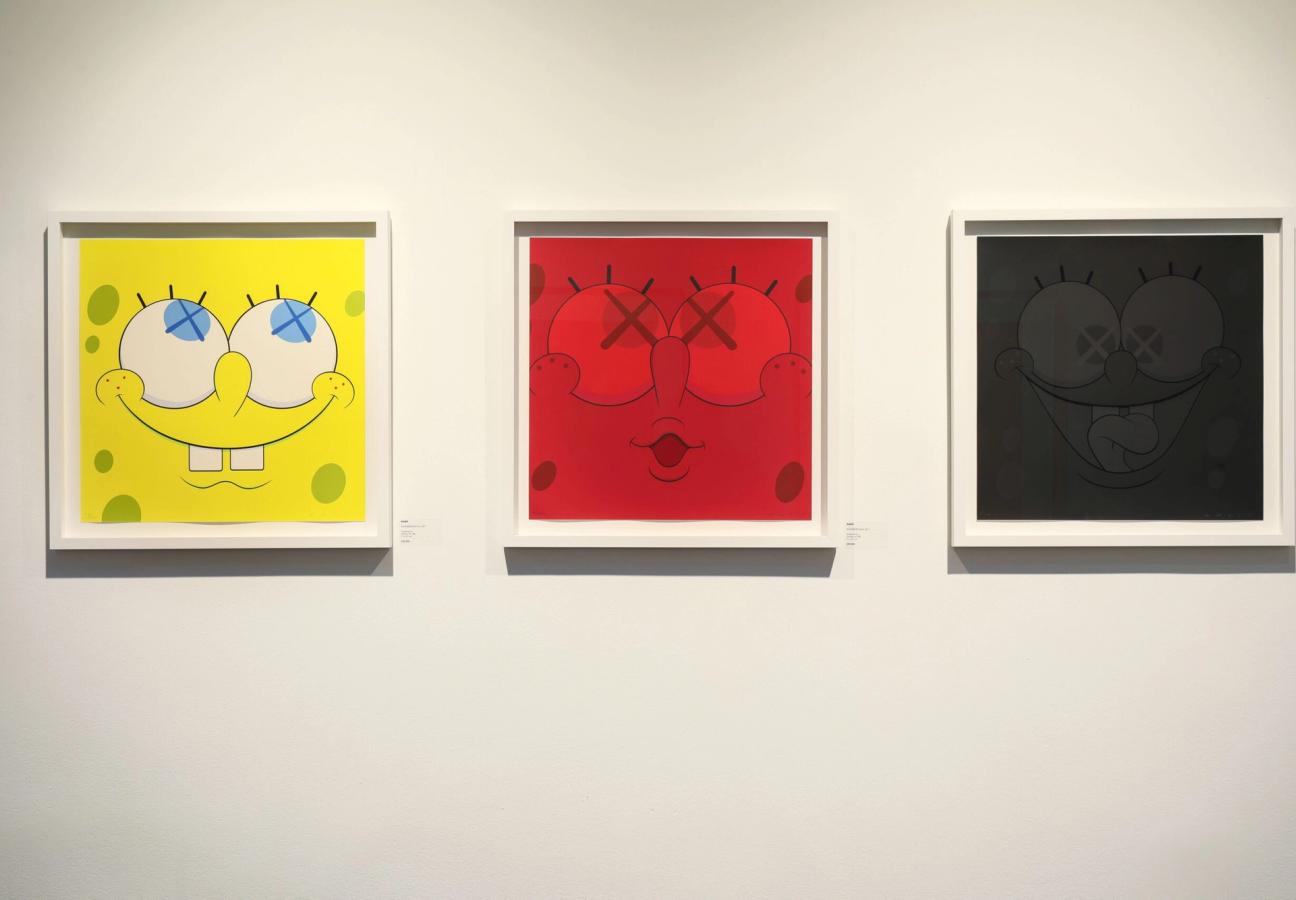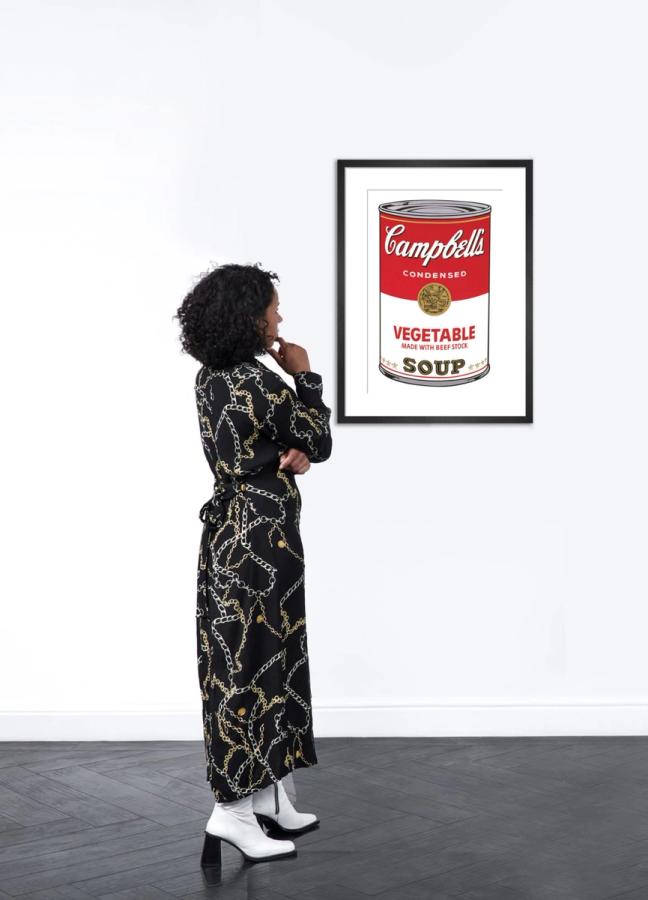

Words: Joseph Bullmore
The print was invented in 3500 BC, when a cunning Sumerian trader of the proto-Elamite period of Southern Mesopotamia rolled a pre-cut cylinder through some clay in order to certify and augment his work.
Well, plus ça change, as the Mesopotamians almost certainly don’t say. Though our technology has progressed (a little) over the intervening 5,500 years, the goal of printing in art has remained roughly the same — to reproduce, to promote, and to verify. And that cosmic chain of events kicked off by a dexterous Sumerian now has happy consequences for us here today.
Prints can make our walls look more handsome, can provide a nifty ‘way in’ to the work of an artist we admire, and can bolster our burgeoning art collections, all at once. But how can you dive into this world? And what, precisely, does it all mean? With the expert insight of John Russo — the CEO at Maddox Gallery and an avid collector of prints in his own right — we’ve put together an indispensable guide into this rich and beguiling world.

Kawsbob, Kaws, 2011
What is a print?
Very simply, a print is any impression in which an artistic image has been transferred from one surface to another. It is a simply a copy of an original artwork, in other words. Prints are usually made in runs of limited multiples, allowing the piece to be sold at a more affordable price point for collectors, and opening up another level of the artist’s market. A print is distinct from the original work, of course, of which there is typically only one.
“One of the core tenants of a print’s existence is that it allows a community of people to access the artist’s work when they can’t afford an original canvas,” says John. “Artist’s don’t want to forget about the people who supported them from day one.”

Keith Haring, Fertility Suite Untitled 4, 1983
What different types of print exist?
Plenty — though some are more common than others. Silkscreen printing is a method where a piece of woven fabric is stretched over a wooden frame in order to create a screen, and the areas of the screen that will not form part of the intended image are then blocked out by a variety of stencil-based methods before ink is applied.
With a lithograph, the artist draws with a greasy crayon onto a polished slab. When the greasy image is ready to be printed, a chemical mixture is applied to the surface of the slab in order to bond it. The surface is then dampened with water, which only adheres to the non-greasy areas. Oily printers’ ink is then rolled across the surface and sticks to the greasy imagery. A damp piece of paper is placed over the slab and run through a press, transferring the image across.
With a woodcut, an image is sketched onto a block of wood before being cut, leaving the desired raised image behind. The raised areas are then inked, leaving the cut away areas blank. They can then be printed using a press or by hand.
Banksy, Flying Copper, 2004
Banksy, Happy Chopper, 2003
Why are prints so important to the budding art collector?
“Nothing kickstarts an art collection like prints,” says John. “One of the most intimidating things about the art world is that sense of ‘where do I begin?’. With prints, you could buy a really great print from an emerging talent for a few hundred pounds,” he says.
“And whenever you buy artwork, it will serve two functions. It’s either telling a story about you; or it’s providing you with a story you want to tell about the piece. A print can give you that at a more accessible price point, and give you the collecting bug, too. It gets you invested in researching art in a way that any other collectible field does.”
“My personal art collection was kickstarted by prints. Even today, I still continue that print journey. You won’t ever grow out of it — and it’s a wonderful companion to those who want to collect canvases as well.”

Andy Warhol, Vegetable Soup, 1968
What determines the price of a print? And what should I look for when acquiring one?
There are several factors at play when it comes to a print’s price, John says — not least the value of the original work, of course. A good rule of thumb when considering price is to think of things in percentage terms. “If someone was selling an original canvas for £10,000, for example, I would be surprised to see their prints selling for more than 10% of that,” he explains.
The final quality, rarity, and complexity of the piece are also factors. The world record for the sale of a print was Pablo Picasso’s La Femme qui Pleure, I, 1938, which sold at Christies for $5.12 million in 2011 — thanks, in no small part, to its near flawless quality.
“Away from this, the other thing that might determine price is the technical side of things. Silkscreen printing, for example, is always going to be preferred by collectors because of the richness of the colours and the vibrancy,” he says. “The quality feels more like artwork than producing a printed copy. The thickness of the paper can be a factor, too, and the ink. And all these different things start to contribute to the overall price.”
The edition size can make a difference, as well. “If you’re buying a piece that’s one of 25, it’s got a lot more scarcity value than an open edition,” John explains. “When it comes to numbered editions, the lower the better. When you get over 100, in my opinion, it begins to lose its scarcity value.”
Equally, the artist’s signature is crucial, and something John always looks for when acquiring prints. “There is really no reason why the print can’t be signed by the artist if they’re living. A signature is critical. I’d be disappointed not to see it on the work.”
The Connor Brothers. The Truth Is Rarley Pure, 2020
Jean-Michel Basquiat, Flexible, 1984:2016
What are some recent 'success stories' — prints that have increased healthily in value in recent years?
“In the last year alone, we’ve seen a phenomenal reaction in the Banksy market,” says John. “I’ve had people who have recognised extraordinary demand around Banksy prints, and thought about either selling the work — or purchasing more work. For me, if I had to buy a print this Christmas, it would be one by [street artists] Banksy, Jerkface or [photographer] David Yarrow.”
The numbers bear this out. A Banksy print of Kate Moss, bought for £75,000, recently sold after a period of just over a year for £165,000 — a value increase of 120%. A print of the street artist’s ‘Jack and Jill’ work, sold by Maddox, leapt by 204% in just 12 months, from £28,000 to £85,000.
But more traditional blue chip names like Damien Hirst and Andy Warhol are going strong, too. A print of Hirst’s ‘Methamphetamine’ dot painting, for example, recently jumped 108% in just shy of two years, from £25,000 to £53,100. These are staggering returns that point to an enduringly healthy marketplace.

Damien Hirst, Mickey and Minnie, 2016
How can Maddox help me get started?
The gallery is known for its entirely snobbery-free and famously friendly approach to art and the art market. In an industry that so often seeks to limit access, throw up barriers, and generally snort disdainfully at those looking to begin their journey, Maddox is refreshingly open and welcoming about the process.
“We like to think that we are incredibly accessible to clients who might not know where to begin,” says John. “This is a universe that is not as scary as it sounds. We can help you navigate it. Our ability to source work is great — we have a phenomenal acquisitions team. But we really help people on that journey by holding their hand, too, so to speak. By working out what they like, what they might already own, what they might like to own. We don’t sell — we just educate and guide people, and we make it all extraordinarily fun.
“I think that’s why people gravitate towards Maddox.”
Read next: Top Cat: Iconic photographer David Yarrow talks luck, logistics — and lion cages


